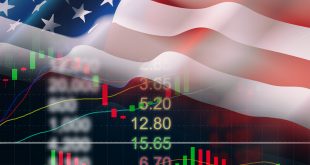Federal Reserve Bank of San Francisco President Mary Daly said on Friday that the latest Omicron wave will extend the time period that inflation will remain high.
Federal Reserve Bank of New York President John Williams said on Friday that he expects the Omicron wave to temporarily prolong and intensify labour supply challenges and supply-chain bottlenecks. He also expects the wave to slow growth in the next few months as people once again pull back from contact-intensive activities.
Additional Quotes By Daly:
“Covid is the main reason for high inflation.”
“We need to unwind the Covid-induced inflation boom to get supply and demand into better balance.”
“We have to adjust policy to ensure we achieve price stability.”
“Slowing the economy a little bit with rate hikes will help bring demand down into better line with supply.”
“We want to bridle the economy a little bit.”
“It is appropriate for the Fed to bring inflation down.”
Additional Quotes By Williams:
“The economy should return to a solid growth trajectory and supply constraints should ebb after Omicron subsides.”
“Expects real GDP to increase around 3.5% this year.”
“Expects the unemployment rate will continue to come down further to 3.5% this year.”
“Expects inflation to drop to around 2.5% this year, much closer to the FOMC’s 2% longer-run goal.”
“Expects inflation to get close to 2% in 2023.”
“The next step in reducing monetary accommodation will be to gradually bring the target range for Fed funds rate back to more normal levels.”
“The timing of such decisions will be based on a wide range of data and information, with a clear eye on Fed’s maximum employment and price stability goals.”
“Inflation is too high and the Fed would not want to see it persist at high levels.”
“The economy is very close or near to maximum employment.”
“The Fed needs to bring inflation down.”
“A lot of the factors driving inflation are still related to pandemic effects.”
“High shipping costs are due to imbalances and those will be resolved.”
“There is a lot of uncertainty about the inflation outlook.”
“The Fed is committed to achieving 2% inflation over time.”
“The Fed is data dependent and driven by analysis.”
“Some supply chain issues are more persistent than he initially thought.”
“The drivers of inflation have been more persistent.”
“That’s why some people expect inflation to be higher this year than previously thought.”
“As the data changed and drivers of inflation changed the fed had to move policy consistent with that.”
“He doesn’t know exactly what the path of the fed funds rate will be this year because it will be driven by data.”
“The Fed forecast seeing rate increases this year is completely sensible.”
“It makes sense to continue this process of removing accommodation.”
“The Fed can control short-term interest rates through various tools.”
“He is confident that when it is time to adjust monetary policy the Fed has the tools.”
“The Fed has the ability to manage the balance sheet smoothly.”
“The primary tool of monetary policy is the Fed funds rate.”

 Noor Trends News, Technical Analysis, Educational Tools and Recommendations
Noor Trends News, Technical Analysis, Educational Tools and Recommendations




